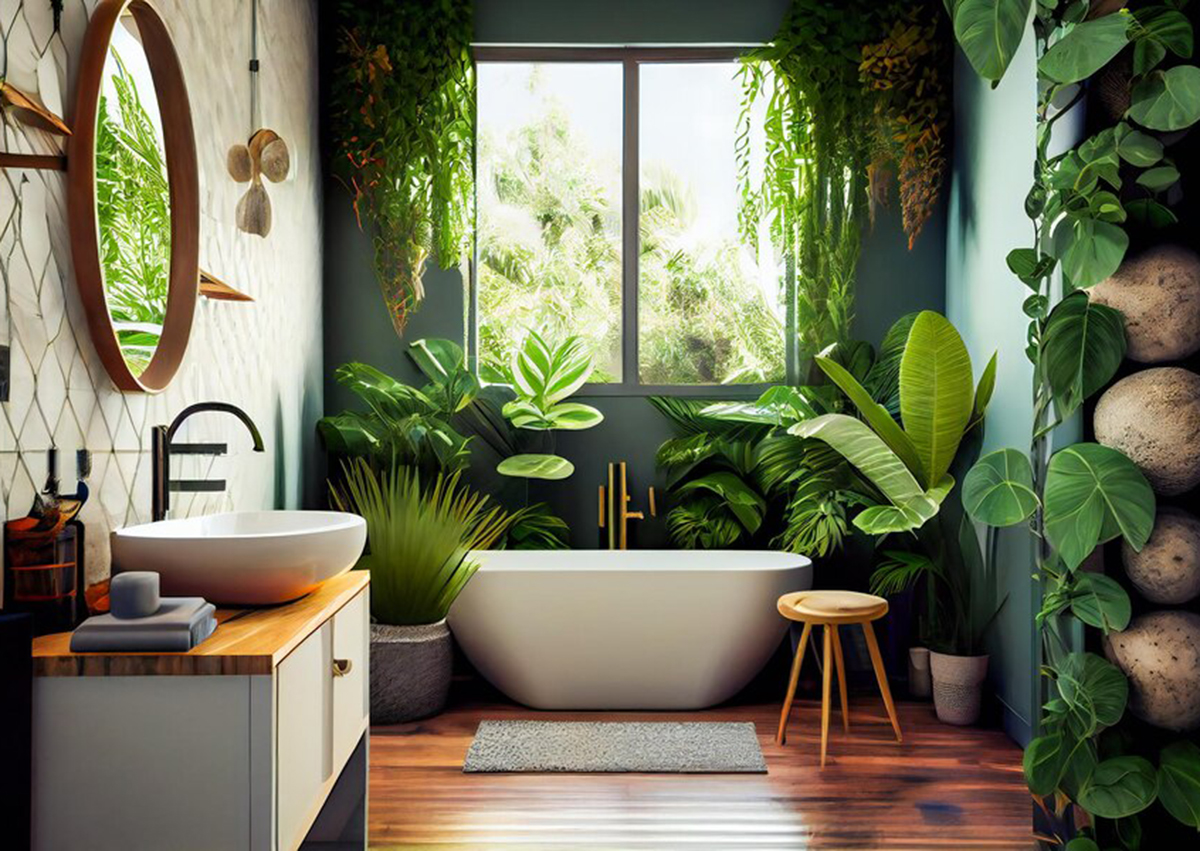
Did you know the average person in the UK uses around 142 litres of water each day?
Unsurprisingly, most of this water is used in the bathroom - making it a key area to focus on when trying to live more sustainably.
The good news is that, with a few simple changes, you can create an eco-friendly bathroom that reduces your environmental impact and saves you money on utility bills. This guide will explore the benefits of a sustainable bathroom and provide useful tips on how you too can create one.
Let's get started!
Benefits of an eco-friendly bathroom
A green bathroom can provide some serious benefits, including:
- Water conservation: Sustainable bathrooms typically use low-flow toilets, faucets, and water-saving showers, which can significantly reduce water usage and lower your water bills.
- Energy efficiency: Bathrooms designed with a focus on sustainability often incorporate lighting, ventilation, and heating systems that are energy efficient. This can result in decreased energy consumption and lower utility bills.
- Improved indoor air quality: Bathrooms designed with an eco-conscious eye prioritise using non-toxic, natural, and sustainable materials. This can contribute to healthier indoor air quality and reduce the potential for respiratory issues.
- Minimised environmental impact: By adopting eco-friendly practices, bathrooms can play their part in reducing carbon emissions. This can be achieved by using renewable energy sources like solar power and implementing measures to conserve water and energy.
- Financial benefits: Investing in an environmentally conscious bathroom can yield long-term savings. By reducing water and energy usage, along with maintenance and repair expenses, environmentally conscious bathrooms will ensure you have more money in your back pocket over a period of time.
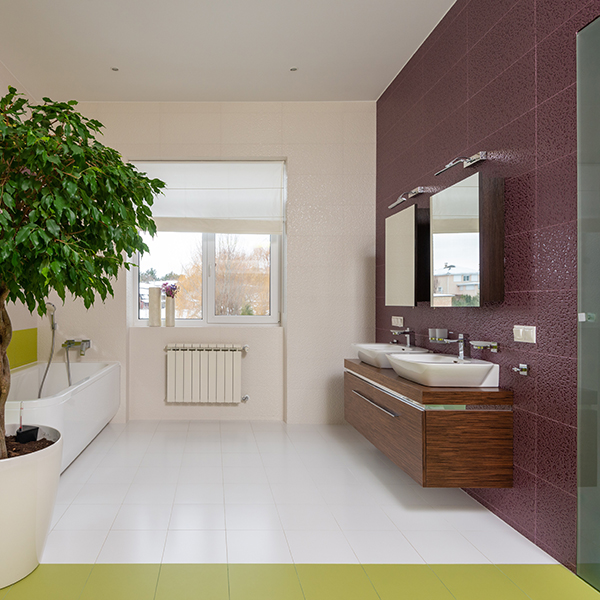

Sustainable Materials for Your Bathroom
Choosing eco-friendly flooring options
Choosing eco-friendly flooring is a great way to both reduce environmental impact and create a healthier living space.
- Bamboo flooring is a popular choice as it is a fast-growing, renewable resource that is durable and easy to maintain. It is also naturally resistant to moisture and insects.
- Cork flooring is another sustainable option that is harvested from the bark of cork oak trees. It is soft, comfortable to walk on, and has natural insulation properties.
- Reclaimed wood flooring is a great way to reuse existing materials and give them a new lease of life. Linoleum flooring is made from natural materials such as linseed oil, cork dust, and wood flour. It is durable, easy to clean, and comes in various colours and patterns.
- Recycled rubber flooring is made from old tyres and other rubber products. It is durable, slip-resistant, and easy to maintain.
Sustainable bathroom fixtures, accessories, and practices
Water is a precious resource and investing in sustainable bathroom fixtures and accessories can significantly reduce your water and energy consumption. You can also think about using natural and organic bathroom accessories such as bamboo toothbrushes, organic cotton towels, and natural soap.
Low-VOC paints and finishes
Volatile organic compounds (VOCs) are harmful chemicals found in many paints and finishes. These chemicals can cause respiratory problems and contribute to indoor air pollution.
Opt for low-VOC paints and finishes to create a greener and healthier living space when painting your bathroom.
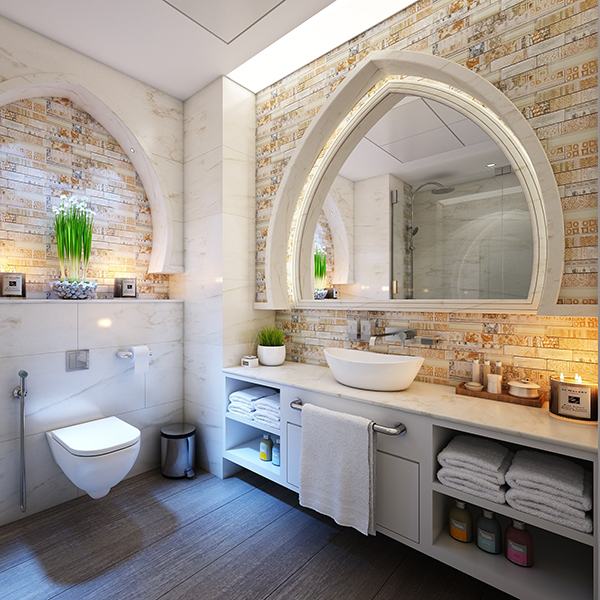

Water-Saving Fixtures and Practices
High-efficiency toilets
High-efficiency dual flush toilets are effective water-saving fixtures that can significantly reduce water consumption. These toilets have two buttons or handles, one for liquid waste and one for solid waste - allowing you to choose the appropriate amount of water for each flush.
This update to your bathroom can save thousands of gallons of water per year compared to a traditional toilet.
Water-saving faucets and showerheads
Water-saving faucets and showerheads are designed to reduce water usage during activities like handwashing, toothbrushing, and showering. They use aerators or flow restrictors to limit water flow without sacrificing performance.
Aerators attach to faucets and mix air with water, creating a steady stream that feels full but uses less water overall. Flow restrictors limit water flow through showerheads or faucets, reducing water consumption.
Look for "low-flow" or "water-efficient" labels when shopping for water-saving fixtures. These products meet water usage standards and help save water and money on utility bills.
Smart water management techniques
Smart water management techniques like fixing leaks early, using smart water metres, and leak detection systems can also help reduce water usage. And it’s not just water waste, they can help prevent potential property damage too.
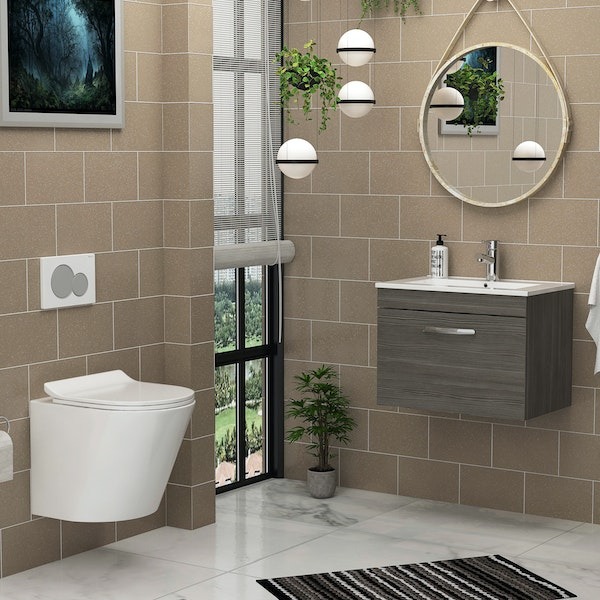

Energy-Efficient Practices
Efficient lighting solutions
Efficient lighting solutions such as LED lights and motion sensor lighting can also help to promote an eco-friendly bathroom.
LED lights are naturally energy-efficient and long-lasting - using up to 75% less energy than traditional bulbs. While motion sensor lights can automatically turn off lights when the bathroom is not in use, reducing any energy waste.
Energy-saving ventilation and insulation
Energy-efficient ventilation systems with heat recovery can reduce your heating costs considerably.
Insulation maintains a comfortable temperature, it reduces the need for heating and cooling and improves overall comfort. This will all help to reduce your energy consumption, lower your energy bills, and contribute to the conservation of natural resources.
Incorporating natural light
If you can harness natural light in your bathroom, it’s a great way to create a bright and eco-friendly space.
Here are some tips to help you achieve this:
- Install a skylight or window: Adding a skylight or window to your bathroom will bring in natural light and fresh air. This can help reduce the need for artificial lighting and ventilation, saving energy and reducing your carbon footprint.
- Use light-coloured materials: Light-coloured walls, floors, and fixtures can help reflect natural light and make your bathroom feel brighter and more spacious. We just love earthy colours like mint green or rock grey for your bathroom furniture. This can also reduce the need for artificial lighting.
- Use mirrors: Mirrors can help reflect natural light and make your bathroom feel brighter. Consider installing a large mirror or multiple mirrors to maximise the amount of natural light in your space.
- Keep windows and skylights clean: Dirty windows and skylights can block natural light from entering your bathroom. Be sure to clean them regularly to ensure maximum natural light.
Green Bathroom Ideas
Recycling and waste management
Recycling and waste management are essential components of a sustainable bathroom. You may install a recycling bin and compost bin in your bathroom to reduce waste and promote sustainability.
Using organic and natural bathroom products
Using organic bathroom products can significantly reduce your exposure to harmful chemicals and promote a healthier living space. Look for products made from natural ingredients such as essential oils, plant extracts, and natural minerals.
Incorporating plants for air purification
Plants are natural air purifiers and can significantly improve indoor air quality. There are lots of plants that thrive in a bathroom environment such as spider plants, peace lilies, and bamboo palms.
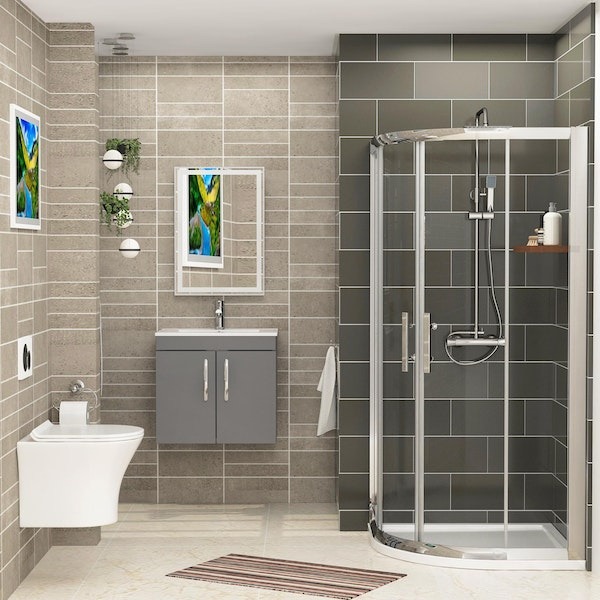

Eco-Conscious Design
Creating a minimalist and clutter-free space
Creating a minimalist and clutter-free space can promote relaxation, and reduce stress - helping you stay on track with your eco-friendly bathroom goals.
Declutter your bathroom and invest in storage solutions such as shelves and baskets to create an organised and functional space.
Repurposing and upcycling in bathroom design
Repurposing and upcycling old items can significantly reduce waste and promote sustainability. You may repurpose old furniture or use reclaimed wood to create unique and environmentally conscious bathroom designs.
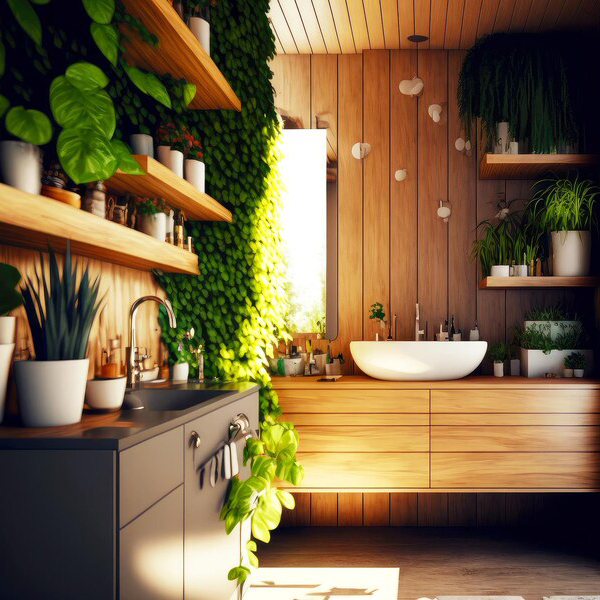

Conclusion
Creating an eco-friendly bathroom is a simple and effective way to promote sustainability and reduce your carbon footprint.
By using sustainable materials, water-saving fixtures, and energy-efficient practices you can conserve vital water and energy. And all while creating a healthier and more sustainable living space.
